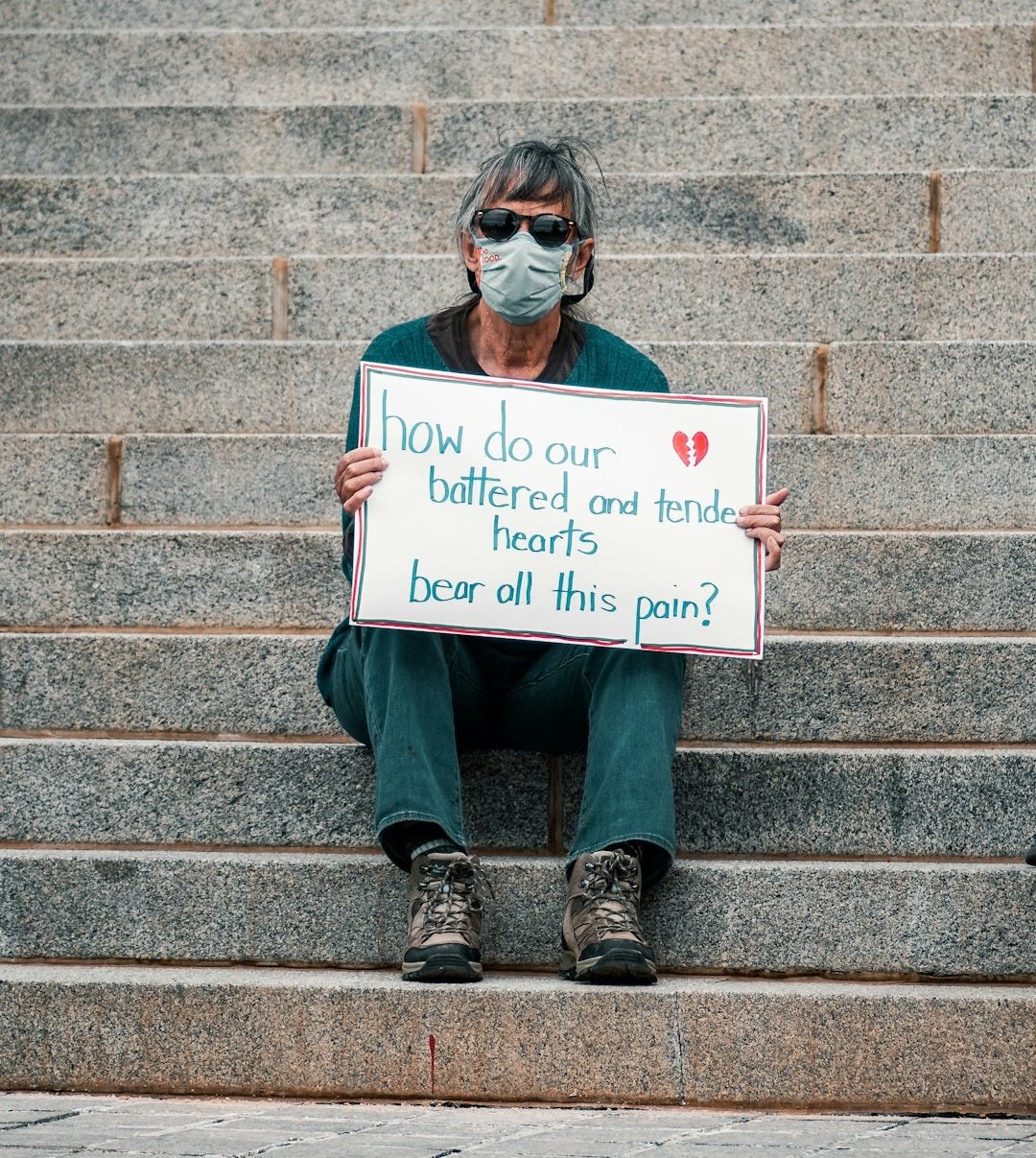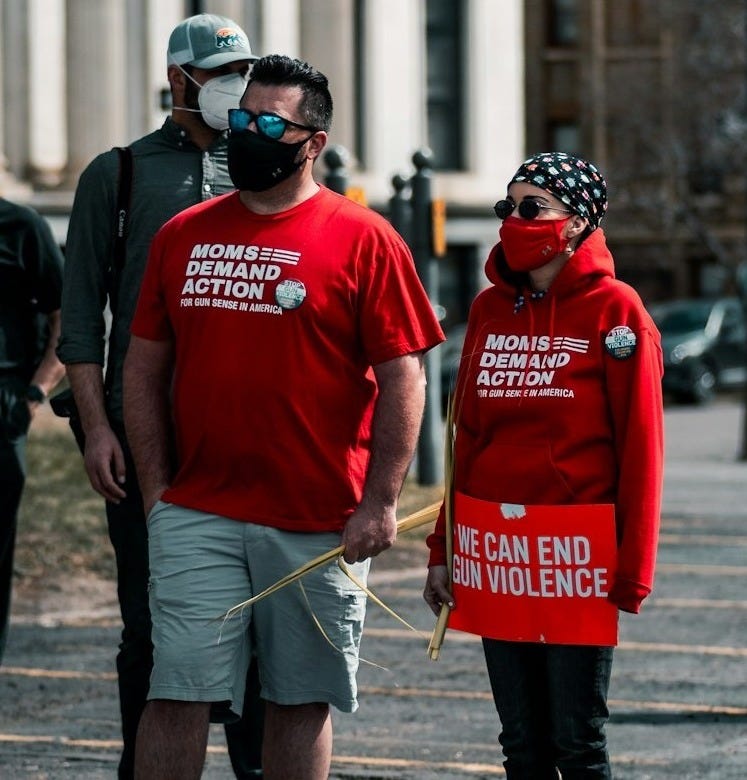Mental Illness isn’t the Cause of Domestic Terrorism: Radicalized Hate Is
Stop scapegoating the vulnerable. Start confronting the real threat.
Every time a mass shooting or act of domestic terrorism occurs, politicians and pundits rush to blame "mental illness." This narrative is not just lazy — it is violence. It scapegoats people living with mental health conditions, fuels stigma, and obscures the real driver of violence: radicalization into hate-based ideologies.
Call it what it is!
It’s time to tell the truth and shame the devil. America must stop blaming mental illness for domestic terrorism and confront radicalization instead. Every time a mass shooting or an act of domestic terrorism happens, the same tired excuse gets rolled out:
It must have been mental illness.
This narrative isn't just wrong — it’s a violent distortion of reality. Mental illness doesn’t radicalize someone into hate. Mental illness doesn't plant bombs or storm capitols waving hate symbols. Radicalization does.

Mental Illness ≠ Violence
There is a false equivalence here.
According to the American Psychological Association (APA), people with mental illnesses are far more likely to be victims of violence than perpetrators.
A 2015 study published in the American Journal of Public Health found that only about 4% of violence in the United States can be attributed to mental illness.
In fact, substance abuse and radical ideological beliefs are much stronger predictors of violent behavior than mental health conditions.
Yet after shootings like Uvalde or Charleston, we hear the same script: "He was troubled." But "troubled" doesn’t explain:
Why 66% of domestic terror attacks are tied to white supremacists (CSIS, 2020).
Why the Capitol rioters included military veterans and CEOs—not just "loners."
Why mass shooters often leave manifestos steeped in racist, misogynist, or anti-government rhetoric.
Radicalization is the Real Threat
The FBI has warned for years that white supremacist extremism is the #1 domestic terror threat.
The FBI and Department of Homeland Security consistently warn that white supremacist extremism is the greatest domestic terrorism threat facing the United States. According to a 2022 Senate Homeland Security and Governmental Affairs Committee report, “White supremacist extremists pose the primary threat among all domestic violent extremists. The Department of Homeland Security (DHS) provided the Committee with data showing white supremacists were responsible for 51 out of 169 domestic terrorist attacks and plots from 2010 through 2021, the highest number among domestic terrorist ideologies”
Since 2019, both DHS and the FBI have repeatedly stated in official threat assessments and congressional testimony that white supremacist violence is the most persistent and lethal terrorist threat to the United States.
In 2020, a report from the Center for Strategic and International Studies (CSIS) found that over 66% of domestic terror attacks and plots were carried out by white supremacist extremists.
These attackers are not mentally ill — they are radicalized through online propaganda, conspiratorial communities, and political rhetoric that dehumanizes others:
Online echo chambers (4chan, Telegram, extremist YouTube channels).
Conspiracy theories (Great Replacement, QAnon).
Political rhetoric that frames minorities as "invaders" or "threats."
Why the "Mental Illness" Excuse Persists
Political Expediency: It's easier to blame mental illness than confront the political radicalization many leaders have stoked. Blaming mental illness lets lawmakers avoid gun reform and ignore their own role in stoking extremism. As of 2023, 12 states have passed laws loosening gun restrictions while citing "mental health solutions" (Giffords Law Center).
Media Bias: Violent white attackers are often humanized, while Black or Muslim attackers are quickly labeled "terrorists."
Studies show white attackers receive 3x more sympathetic coverage (Columbia Journalism Review, 2021).
Protecting Privilege: Calling out white nationalist terror forces a reckoning with America's unfinished work on racism and inequality.
Systemic racism (e.g., Trump’s "very fine people" comment).
Gun culture’s ties to far-right militias (NRA’s ties to extremist groups, per Reuters).
Enough is Enough!
Call to Action
We must end the false narratives that scapegoat the vulnerable while excusing violent radicalization.
We must:
✅ Demand media stop sanitizing white terror—call it what it is.
✅ Pressure lawmakers to investigate extremist networks, not deflect to "mental health."
✅ Challenge friends/family/neighbors who parrot these myths.
Domestic terrorism fueled by white supremacy is terrorism — not mental illness.
The sooner we name the true threat; the sooner we can dismantle it.
Do The Research
I encourage you to look deeper. Especially if you come from a community — or hold beliefs — aligned with these extremist ideologies.
Radicalization is a form of conditioning.
You are being groomed — slowly and systematically — to adopt someone else’s extremist worldview. I challenge you—especially if you come from communities sympathetic to extremist ideologies—to interrogate the narratives you’ve been fed. Radicalization doesn’t happen by accident. It’s a deliberate conditioning process, much like grooming:
Dehumanization First: Hate groups always start by convincing you their enemies are less than human—"vermin," "invaders," "pedophiles." Sound familiar?
Us vs. Them: They isolate you from dissent (e.g., "fake news" rhetoric) and foster dependency on their ideology.
Escalation: What begins with memes ("libtard") evolves into violent rhetoric ("hang Mike Pence"), then action (January 6th).
Who is the most powerful groomer in America today? Donald Trump.
For nearly a decade, he has held rally after rally — not to unite or uplift — but to stoke grievance, incite fear, and condition people into embracing the violent, exclusionary tenets of MAGA ideology.
His rallies and social media have weaponized:
Conspiracy theories: QAnon, "stolen election"
Dehumanizing language: "Mexican rapists," "enemies of the people"
Violent escalation: "Stand back and stand by," "I’ll pay your legal fees if you riot"
This isn’t politics—it’s radicalization. And the data proves it:
Trump supporters are 3x more likely to endorse violence to achieve political goals (UChicago, 2023).
Counties that hosted Trump rallies saw 226% more hate crimes (Washington Post, 2021).
Your Move
If you’re skeptical, prove me wrong. Research how cults and extremist groups operate. Compare their tactics to Trump’s playbook. Ask yourself: Who benefits from my rage?
📚 Mental Illness ≠ Violence Sources:
Nearly 1 in 5 Defendants in Capitol Riot Cases Served in the Military
American Journal of Public Health study: White Supremacy and the Core Functions of Public Health
📚 Radicalization is the Real Threat Sources:
CSIS: The War Comes Home: The Evolution of Domestic Terrorism in the United States
Tracing Violent White Supremacists and Online Radicalization from Charlottesville to Today
CSIS: The Rising Threat of Anti-Government Domestic Terrorism: What the Data Tells Us
CSIS: The Military, Police, and the Rise of Terrorism in the United States
The Bottom Line
Terrorism isn’t a psychiatric diagnosis—it’s a choice to embrace hate. And until we confront that, the bloodshed won’t stop.
💬 Your turn: How have you seen this myth play out in your community? Leave your comments below or subscribe and join the Chat.




